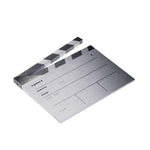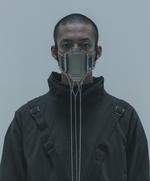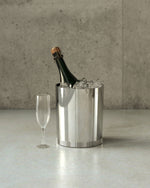08.04.20 in inspirations
dieter rams

Genius, God, absolute master... It is not certain that the one who had the adage “Weniger, aber besser / Less but better” is touched by all these superlatives. A simple “your design is good” would certainly be enough for him, as would the veneration that Jonathan Ive has for him by making each Apple product a technological homage to the objects he imagined during 40 years at Braun.
Born in 1932 in Wiesbaden, Dieter Rams grew up in a Germany fractured by the Second World War. He studied carpentry, then architecture, before training with Otto Apel. His influences from Bauhaus and the Ulm art school, his appetite for functionalism in design, ultimately brought him to Braun. He became head of design at age 23 without knowing that most of his creations would one day appear at MOMA. Radio, record player, fan, household appliances are his playgrounds.
Industrial designer, product engineer, design theorist, Dieter Rams is a benchmark for le gramme and its founder Erwan Le Louër, also from industrial design. In this impenetrable confusion of shapes, colors and noises already diagnosed by Rams, le gramme approaches the creative process by reducing drawing to the essential, so that emotion occurs when the form only results from the function. A systematism of thought which echoes the values of honesty, simplicity and timelessness established as cardinal points by Rams.
Born in 1932 in Wiesbaden, Dieter Rams grew up in a Germany fractured by the Second World War. He studied carpentry, then architecture, before training with Otto Apel. His influences from Bauhaus and the Ulm art school, his appetite for functionalism in design, ultimately brought him to Braun. He became head of design at age 23 without knowing that most of his creations would one day appear at MOMA. Radio, record player, fan, household appliances are his playgrounds.
Industrial designer, product engineer, design theorist, Dieter Rams is a benchmark for le gramme and its founder Erwan Le Louër, also from industrial design. In this impenetrable confusion of shapes, colors and noises already diagnosed by Rams, le gramme approaches the creative process by reducing drawing to the essential, so that emotion occurs when the form only results from the function. A systematism of thought which echoes the values of honesty, simplicity and timelessness established as cardinal points by Rams.

To ensure that the design is correct, Rams has established 10 precepts that have become commandments for many designers, whether it concerns everyday objects, web interfaces, furniture, good design according to God himself. even must be:
- innovative because developed in tandem with innovative technology, innovative design not being an end in itself.
- useful by meeting criteria, not only functional, but also psychological and aesthetic.
- aesthetic because the products we use every day affect our person and our well-being.
- sustainable. What is not fashionable will never be archaic.
- discreet, because an object is neither a piece of decoration nor a work of art.
- complete down to the last detail. Maintenance and precision in the design process demonstrate respect for the user. Dieter Rams said that the designer is the user's advocate in the company.
- understandable which clarifies the structure of the product to the point of making people talk about it or which goes without saying.
- respectful by conserving resources and minimizing physical but also visual pollution throughout the product life cycle.
- absent or almost absent in the design because it focuses on the essential aspects, without overwhelming the final result with gimmicky features.
- honest, so as not to make a product more innovative, powerful or valuable than it really is.
Named by their weight of precious metal in grams, objects per gram become a tangible marker which ultimately reminds us of the weight and value of things.
- innovative because developed in tandem with innovative technology, innovative design not being an end in itself.
- useful by meeting criteria, not only functional, but also psychological and aesthetic.
- aesthetic because the products we use every day affect our person and our well-being.
- sustainable. What is not fashionable will never be archaic.
- discreet, because an object is neither a piece of decoration nor a work of art.
- complete down to the last detail. Maintenance and precision in the design process demonstrate respect for the user. Dieter Rams said that the designer is the user's advocate in the company.
- understandable which clarifies the structure of the product to the point of making people talk about it or which goes without saying.
- respectful by conserving resources and minimizing physical but also visual pollution throughout the product life cycle.
- absent or almost absent in the design because it focuses on the essential aspects, without overwhelming the final result with gimmicky features.
- honest, so as not to make a product more innovative, powerful or valuable than it really is.
Named by their weight of precious metal in grams, objects per gram become a tangible marker which ultimately reminds us of the weight and value of things.







